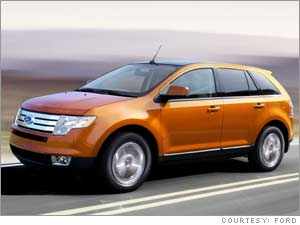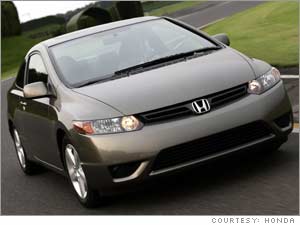As with so many other industries struggling to attract fickle, jaded consumers, the auto industry is seeking out new ways to get its products noticed. Taking a cue from the groundbreaking designs of Mercedes-Benz and Chrysler, other automakers are taking chances with bolder designs that will make their cars clearly recognizable... and ultimately, more appealing.
Ford's new Edge SUV incorporates the "crossover" styling that melds the manageable size of a car with the functionality of a traditional SUV (and that was pioneered by Mercedes, Lexus and Nissan). The Edge's three-bar grill will be a signature feature in several other new Ford models.

The idea is to give cars a unique "design DNA" that equates the brand with fun, excitement, power and sophistication. What car companies fear most is a "vanilla" designation for a design that consumers will equate with blandness and conservatism. To that end, Toyota is redesigning its best-selling yet unremarkable Camry, giving it what it calls a more "athletic" look. Similarly, Honda has given its classic Civic an extreme makeover, making it look more futuristic and less like an economy compact. After all, you may love and admire your father -- and may even agree with his politics -- but you wouldn't be caught dead driving his car!

Exactly how distinctive these new cars will be remains to be seen. To some, the new generation of cars may simply be knock-offs of whatever model is the top seller at the moment. But in a market in which only one US car manufacturer -- the cutting-edge Chrysler -- increased share in 2005, automakers can't afford to do nothing.
Source: CNN/Money
No comments:
Post a Comment